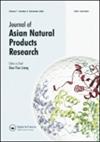利用废橙皮萃取物纳米CuO绿色合成喹诺啉类药物及其衍生物。
IF 1.3
3区 医学
Q3 CHEMISTRY, APPLIED
引用次数: 0
摘要
利用氧化铜纳米颗粒(CuONPs)实现了喹啉及其衍生物的生态合成。这些绿色的CuO NPs是利用废橙皮提取物制备的,它既是还原剂又是稳定剂。然后将纳米颗粒用作可再生催化剂,用于形成喹诺啉及其衍生物。利用PXRD和SEM技术对绿色氧化铜纳米粒子进行了表征。这种方法有很多优点,包括产率高、方法简单、催化剂可回收、处理过程简单。本文章由计算机程序翻译,如有差异,请以英文原文为准。
Green synthesis approach for quinoxalines and their derivatives utilizing waste orange peel extract CuO nanoparticles.
The eco-friendly synthesis of quinoxaline and its derivatives was achieved using copper oxide nanoparticles (CuONPs). These green CuO NPs were prepared utilizing a waste orange peel extract, which acts as both a reducing and stabilizing agent. The nanoparticles were then used as a renewable catalyst in the formation of quinoxaline and its derivatives. Characterization of the green CuO NPs was performed using PXRD and SEM techniques. This approach provides numerous benefits, including high yields, straightforward methodology, catalyst recyclability and an uncomplicated workup process.
求助全文
通过发布文献求助,成功后即可免费获取论文全文。
去求助
来源期刊
CiteScore
3.20
自引率
5.90%
发文量
47
审稿时长
2.3 months
期刊介绍:
The Journal of Asian Natural Products Research (JANPR) publishes chemical and pharmaceutical studies in the English language in the field of natural product research on Asian ethnic medicine. The journal publishes work from scientists in Asian countries, e.g. China, Japan, Korea and India, including contributions from other countries concerning natural products of Asia. The journal is chemistry-orientated. Major fields covered are: isolation and structural elucidation of natural constituents (including those for non-medical uses), synthesis and transformation (including biosynthesis and biotransformation) of natural products, pharmacognosy, and allied topics. Biological evaluation of crude extracts are acceptable only as supporting data for pure isolates with well-characterized structures.
All published research articles in this journal have undergone rigorous peer review, based on initial editor screening and anonymized refereeing by at least two expert referees.

 求助内容:
求助内容: 应助结果提醒方式:
应助结果提醒方式:


